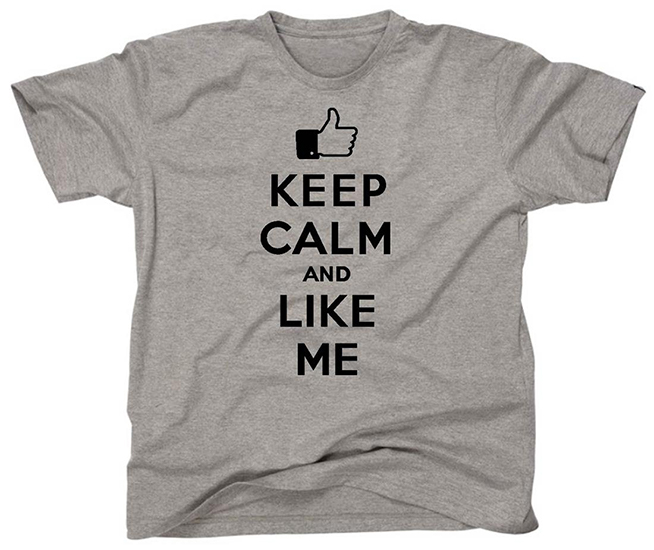Strategy July 10, 2018
Who's Behind User-Specific Apparel on Facebook?
Vendors create hyper-targeted ads to sell tees that look like they were made just for you.
In a Nutshell
*Information gathered from Facebook sharing can be plugged into algorithms to make highly specific T-shirt designs.
*Goods generated through such algorithms have the potential to backfire, and big data should be used with caution.

Despite controversies over privacy, security and misuse, Facebook is still the largest social media network in the world. In the U.S. and Canada alone, 183 million people use Facebook every day, about 80 million more than those who watched the Super Bowl.
And if you’re on Facebook and love to post about beer, Harry Potter or fake news, chances are you’ve probably seen products that specifically target those interests pop up on your news feed.
It’s old news that Facebook ads follow you. But recently, user-targeted T-shirts with extremely specific prints have been circulating people’s news feeds. One user, for instance, posted about alcohol and Harry Potter on Facebook and came across this sponsored item on her newsfeed.

Wondering how that happens? Well, the masterminds behind these market-specific ads can be any tech-geek or business owner. They use algorithms based on data and information extracted from people’s Facebook posts. Some of the top-ranking factors for Facebook algorithms include user comments, reactions, links shared over Messenger groups with friends, engagements or posts shares.
These algorithm merchants play around with different ways to generate designs by creating phrases, scanning a database of digital dictionaries and compiling thousands of words. Then, using digital printing technology, they can maintain a virtual inventory without printing a shirt until it’s ordered.
my mom really bought one of those weirdly specific ttargeted ad shirts frome facebook pic.twitter.com/hNsULddKrH
— silva Tryin to make a change :-\ (@feldspath0id) June 4, 2018
Many businesses use algorithms to generate these T-shirt designs, then leave it to the social media giant to reach out to consumers through hyper-targeted Facebook ads.
In 2011, Michael Fowler, owner of Solid Gold Bomb, took a chance with generating designs through algorithms. He had been in the T-shirt business for 20 years when he realized that T-shirts were “a numbers game, a quantitative culture.”
“We migrated the business to be print on demand,” Fowler told CNN Money in 2013. “It’s never been about taking the time to develop a beautiful design.”
Fowler wrote a computer code that performed the following: Start with the phrase “Keep Calm and ______”; randomly pair it with a verb or a pronoun; formulate a massive list of variations of these words; and finally generate product images of T-shirts with the phrases on them. Soon, Solid Gold Bomb had more than half a million shirts listed on Amazon, and it was selling around 800 shirts a day, thanks to targeted ads, according to a recent article on The Hustle.
But the success was short-lived. Fowler failed to monitor the list of words generated by his algorithm, allowing some disturbing designs to be created, including phrases like “Keep Calm and Hit Her” and “Keep Calm and Rape Her.” It was such a public relations nightmare for Solid Gold Bomb that the company went out of business.
Other online tee companies with similar business models are still thriving, however. Family Reunion Tee, for example, offers shirts and other items with messages personalized by name and birth month and other personal details. Some get really specific, like a mug that proclaims “Never Underestimate a Father Who Listens to Bon Jovi and Was Born in May,” or a tank top that warns “Never Underestimate a Dancer in Her Sixties.”
Clearly, algorithm-based selling is still thriving, but such merchants need to be cautious about the data they gather, and Facebook users should be careful of the information they share online. With big data comes big responsibility. Just because you can scale your virtual inventory into the millions, it’s important to keep an eye on your output to avoid Solid Gold Bomb’s fate.
